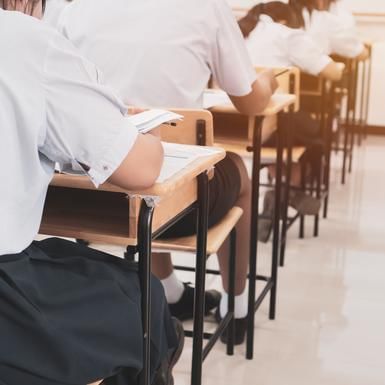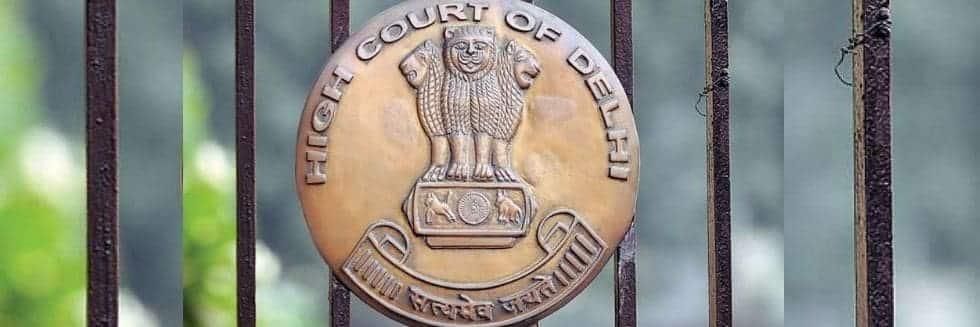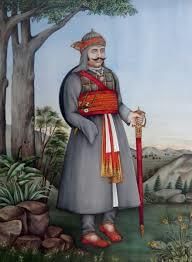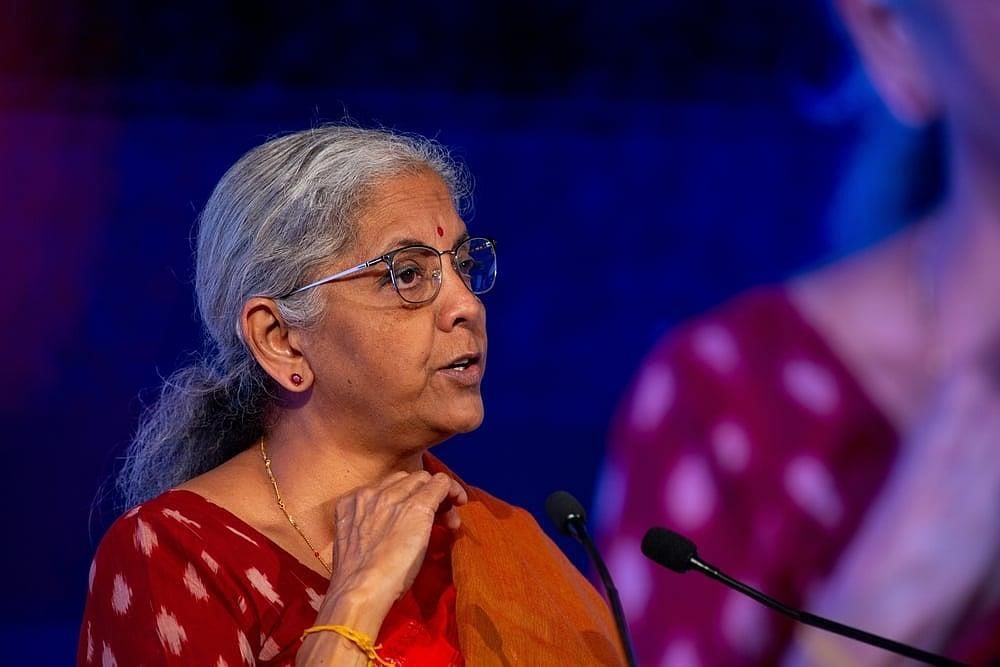UPSC Daily Current Affairs: 27th March 2025 | Current Affairs & Hindu Analysis: Daily, Weekly & Monthly PDF Download
GS1/History & Culture
How Sir Syed Reconciled Faith with Reason
Why in News?
March 27 marks the death anniversary of Sir Syed Ahmad Khan, a significant 19th-century reformer and educationist whose contributions greatly advanced the social and educational development of Muslims in India.
- Sir Syed Ahmad Khan was a leading figure in promoting modern education among Muslims.
- He emphasized the importance of reconciling Islamic faith with modern scientific thought.
- His efforts led to the establishment of crucial educational institutions, including the Aligarh Muslim University.
Additional Details
- Background: Born in Delhi in 1817, Sir Syed was educated in Persian and Arabic, laying the groundwork for his later reforms in education and social issues.
- Public Service: He joined the British judicial service in 1876 and was involved in various educational reforms, including serving on the Viceregal Council and the Imperial Education Commission.
- Educational Reforms: In 1875, he founded Madrasatul Uloom, which evolved into the Muhammadan Anglo-Oriental College in 1877, eventually leading to the establishment of the Aligarh Muslim University.
- Modernity and Critical Thinking: Sir Syed advocated for the coexistence of Islamic principles with modernity and science, promoting critical thinking over blind adherence to tradition.
- Social Reforms: He supported women's education, opposed purdah and polygamy, and called for easier divorce laws.
- Literary Contributions: Sir Syed launched several periodicals to promote rational thought and cultural pluralism, thereby combating sectarianism.
- The Aligarh Movement: This movement aimed to modernize the Muslim community while preserving Islamic values, leading to significant social reforms.
Sir Syed Ahmad Khan's legacy continues to influence educational and social reforms among Muslims in India, showcasing his vision of integrating faith with reason.
GS2/Governance
The CBSE’s Two-Exam Scheme: A Complex Approach
 Why in News?
Why in News?
Recently, the Central Board of Secondary Education (CBSE) announced plans to allow Class 10 students to take their board exams twice a year (in February/March and May) starting from 2026. This initiative is intended to support students and aligns with the National Education Policy (NEP) 2020.
- Students can take board exams twice in an academic year to improve their scores.
- The policy aims to transition from rote memorization to competency-based learning.
- Concerns have been raised regarding increased student stress and financial burdens.
Objectives of the Proposed Policy
- Provide a Second Chance: Students can retake exams to improve scores, which is beneficial for those who may have performed poorly due to unforeseen circumstances, such as illness.
- Promote Competency-Based Learning: The shift aims to test conceptual understanding and problem-solving skills, moving away from rote memorization.
- Align with National Education Policy (NEP) 2020: The approach encourages a flexible and student-friendly assessment model.
Concerns Regarding the Policy
- Short Remediation Window: The time between the first and second exams may not be sufficient for students to adequately improve their weak areas.
- Double the Exam Preparation Pressure: Students may feel compelled to prepare for both exams, increasing stress levels.
- Coaching-Centric Approach: There is a risk that coaching institutes may exploit the two-exam format, promoting exam-focused learning rather than conceptual understanding.
Impact on Economically Weaker Sections
- Higher Examination Fees: Students are required to pay a non-refundable fee for both attempts, which can be a financial burden for low-income families.
- Increased Dependence on Coaching: Wealthier students may afford additional coaching, while economically weaker students may not have access to similar resources.
- Limited Access to Remedial Support: Schools may lack structured support between exams, disadvantaging underprivileged students.
- Delayed Class 11 Admissions: Late results from the second attempt may hinder timely admissions or scholarship opportunities for poorer students.
- Increased Psychological Pressure: The combination of financial strain and the pressure to perform well can lead to heightened anxiety for students from low-income families.
Required Changes for Policy Improvement
- Shift from Rote Learning to Competency-Based Assessment: Redesign exams to focus on conceptual understanding and application rather than memorization.
- Structured Remedial Support Between Exams: Schools should provide targeted coaching for students who struggle in their first attempt.
- Flexible Examination Fee Structure: Allow students to pay for only one attempt if they do not wish to take both exams, promoting financial equity.
- Staggered Implementation with Pilot Studies: Conduct trials in various school settings to identify challenges before full implementation.
- Integration of Continuous and Holistic Assessment: Move towards year-round assessments that evaluate practical skills and creativity, reducing reliance on a single test.
In conclusion, while the CBSE’s two-exam scheme aims to provide students with more opportunities for success, careful consideration of its implications is essential to ensure it aligns with the goals of the NEP 2020 and genuinely supports student learning and well-being.
GS2/Governance
Government Report to Delhi HC Emphasizes Content Disclosure and Labelling for Deepfakes
 Why in News?
Why in News?
The Ministry of Electronics and Information Technology (MeitY) has submitted a status report to the Delhi High Court addressing significant concerns regarding deepfake technology, which creates realistic videos, audio, and images that can mislead and spread false information.
- Deepfakes pose threats to the integrity of information and public discourse.
- The Indian legal framework currently lacks specific laws addressing deepfakes directly.
- Several petitions highlight the urgency for regulation and oversight in the realm of deepfake technology.
Additional Details
- Current Legal Framework:Although there is no specific law for deepfakes, existing laws under the Information Technology Act and other regulations can be applied to address misuse, such as:
- Section 66D: Penalizes cheating by impersonation through computer resources.
- Section 66E: Addresses privacy violations related to deepfake content.
- Sections 67, 67A, and 67B: Prohibit the publication of obscene or sexually explicit material.
- Petitions Filed:Three significant petitions have been submitted to the Delhi High Court:
- Rajat Sharma's Petition: Calls for regulation of deepfake technology and blocking access to related applications, citing threats to democracy.
- Chaitanya Rohilla's Petition: Advocates for regulations on AI usage and oversight.
- Kanchan Nagar's Petition: Seeks a ban on non-consensual commercial deepfakes and fair compensation for original artists.
- Committee Formation: In November 2024, the court mandated the formation of a nine-member committee by MeitY to address deepfake concerns, with stakeholder meetings held in January 2025.
- Challenges and Recommendations: Stakeholders emphasized the need for mandatory disclosure and labeling standards for AI content, alongside better enforcement mechanisms instead of new regulations.
The ongoing discussions focus on addressing the challenges posed by deepfakes, enhancing regulatory measures, and ensuring public safety and trust in digital content. MeitY is set to continue consultations, particularly with victims of deepfakes, to shape effective policies moving forward.
GS3/Science and Technology
Star Formation and the Webb Space Telescope
 Why in News?
Why in News?
The Webb Space Telescope has recently observed a plume of gas and dust emanating from a star in the process of formation, located about 625 light-years away in one of the closest star-forming regions of our Milky Way galaxy, as reported by NASA.
- The star formation process occurs within massive clouds of gas and dust, called molecular clouds.
- External events can trigger the collapse of these clouds, leading to star formation.
Additional Details
- Formation of Molecular Clouds: Star formation initiates in dense, cold interstellar gas and dust primarily composed of hydrogen (H₂), with minor amounts of helium and heavier elements.
- Triggering Mechanisms: External forces such as supernova explosions, galactic collisions, or shockwaves can compress molecular clouds, initiating star formation.
- Gravitational Collapse: Over time, regions within the cloud may become denser, leading to local instabilities that result in the formation of dense cores, known as protostellar cores.
- Protostar Stage: As gravity overcomes internal pressure, the collapsing material heats up. This heat causes the core to rotate and form a flattened accretion disk, where material spirals inward to fuel the protostar’s growth.
- Ignition of Nuclear Fusion: When the core temperature reaches approximately 10 million Kelvin, nuclear fusion of hydrogen into helium begins, marking the birth of a star.
- Main Sequence Stage: The star reaches hydrostatic equilibrium, burning hydrogen for millions to billions of years.
- Factors Influencing Star Formation: The mass of the star determines its end state, with low-mass stars becoming white dwarfs, medium-mass stars evolving into red giants and then shedding layers to become planetary nebulae, and high-mass stars exploding as supernovae, potentially forming neutron stars or black holes.
This remarkable sequence of star formation highlights the complex processes that lead to the birth of stars, illustrating not just the beauty of the cosmos but also the intricate mechanics that govern it.
GS3/Science and Technology
Parliament's Concerns Over GSAT-18 Expenditure
Why in News?
The Public Accounts Committee (PAC) has expressed its disappointment regarding an avoidable expenditure of Rs 17.27 crore related to the launch of the GSAT-18 communication satellite. The committee raised important questions about the economic viability of GSAT-18, particularly due to the underutilization of six transponders until 2027. Furthermore, the PAC has urged the Department of Space to exercise increased financial prudence when planning satellite projects that involve public funding. The report also noted a significant revenue loss of ₹117 crore linked to idle transponders.
- The PAC's dismay at the Rs 17.27 crore expenditure on GSAT-18.
- Concerns regarding the underutilization of transponders until 2027.
- Recommendation for better financial planning by the Department of Space.
- Highlighting a revenue loss of ₹117 crore from idle transponders.
Additional Details
- About GSAT-18: Launched by the Indian Space Research Organisation (ISRO) on October 5, 2016, using the Heavy-duty Ariane-5 VA-231 rocket from Kourou, French Guiana. The satellite weighs 3,404 kg at liftoff and has a mission life of 15 years, expected to last until 2032.
- Orbit: GSAT-18 was injected into a Geosynchronous Transfer Orbit (GTO) and is managed by ISRO's Master Control Facility (MCF) located in Hassan, Karnataka.
- Key Features: It includes 48 communication transponders across Upper Extended C-band, Normal C-band, and Ku-band, providing various services such as television, telecommunication, VSAT, and digital satellite news gathering.
- GSAT-18 enhances ISRO’s operational fleet of 14 telecommunication satellites and plays a crucial backup role, ensuring continuity of communication services by replacing aging satellites.
In conclusion, the PAC's scrutiny of the GSAT-18 project underscores the importance of fiscal responsibility and effective management in satellite projects funded by public resources. The recommendations aim to improve efficiency and prevent future financial discrepancies.
GS2/International Relations
Senkaku Islands Dispute
Why in News?
Recently, Japan has expressed significant concerns regarding a prolonged incursion by Chinese Coast Guard ships in the vicinity of the disputed Senkaku Islands in the East China Sea, marking one of the longest invasions of Japan's territorial waters.
- The Senkaku Islands are an uninhabited group of islands located in the East China Sea.
- They are subject to a territorial dispute involving Japan, China, and Taiwan.
- Japan currently administers the islands as part of Ishigaki city in Okinawa Prefecture.
Additional Details
- Senkaku Islands: This group includes Uotsuri Island, Kuba Island, Kumeakashima Island, Kitakojima Island, Minamikojima Island, Tobise Island, Okinokitaiwa Island, and Okinominamiiwa Island. The total land area of all these islands is approximately 6.3 square kilometers, with Uotsuri Island being the largest at around 3.6 square kilometers.
- Geological Composition: The islands consist of conglomerate sandstone, tuff, and andesitic lava. They are characterized by coral outcroppings that were elevated above sea level during the Holocene era, and the surrounding area is known for its volcanic activity.
- The islands were incorporated into Japanese territory in 1895 and have not been administered by any other country since then.
The ongoing dispute over the Senkaku Islands continues to be a point of tension in international relations, particularly between Japan and China, and highlights the complexities of territorial sovereignty in the region.
GS1/History & Culture
Rana Sanga: The Legendary Rajput Ruler
 Why in News?
Why in News?
The recent criticism by Rajasthan Chief Minister Bhajanlal Sharma towards Samajwadi Party MP Ramji Lal Suman for labeling Mewar ruler Rana Sanga as a "traitor" has sparked significant discourse. This highlights the historical relevance of Rana Sanga and his contributions to the region.
- Rana Sanga was the ruler of Mewar from 1508 to 1528 CE.
- He played a crucial role in consolidating Rajput power in Northern India.
- His military campaigns included notable battles against the Mughal Empire and other regional powers.
Additional Details
- Birth and Ascendancy: Rana Sanga was born in 1482 to Rana Raimal of Mewar and ascended the throne in 1508 after a succession struggle.
- Military Achievements:
- Expanded Mewar by defeating Malwa Sultan Mahmud Khalji II.
- Engaged in battles against Gujarat Sultan Muzaffar Shah II and the Lodhi rulers of Delhi.
- Notable victories include the Battle of Khatoli (1518) and the Battle of Dholpur (1519) against Ibrahim Lodi.
- Battle of Khanwa (1527): This pivotal battle against Babur, the founder of the Mughal Empire, resulted in his defeat due to Babur's advanced military tactics and use of gunpowder.
- Following his defeat at Khanwa, Rana Sanga attempted to regroup but was allegedly poisoned by his own nobles in 1528, fearing another confrontation with the Mughals.
Rana Sanga's legacy as a strong and capable ruler remains significant in the context of Indian history, particularly in understanding the power dynamics of the Rajput clans and the emergence of Mughal dominance.
GS3/Science and Technology
The Quality of India’s Publications
Why in News?
The assertion made by India's Union Minister for Science and Technology at a recent National Science Day function—that India will surpass the United States in scientific publications by 2029—has sparked debate. Despite this ambitious claim, a closer look at research metrics, funding, and quality raises questions about the feasibility of this goal.
- India's R&D investment is significantly lower than leading nations.
- The quality of Indian research publication is under scrutiny due to issues like predatory journals and ethical concerns.
- India ranks low in citation impact compared to other major countries.
Additional Details
- Research Investment: India currently spends only 0.67% of its GDP on R&D, in stark contrast to other nations: Israel (6.3%), South Korea (4.9%), and the U.S. (3.46%). This lack of investment limits India's ability to compete in the global scientific arena.
- Research Quality Concerns: India's citation impact (0.879) is below that of China (1.12) and the U.S. (1.25), placing India at 28th among 30 ranked countries. Moreover, significant disparities exist in publication output in top-tier journals.
- Predatory Journals: A 2018 study indicated that 62% of the world's standalone predatory journals originate in India, diminishing the credibility of Indian research publications.
- Ethics in Research: Issues like plagiarism and data fabrication are rampant, often driven by institutional pressures for publication to secure promotions and funding.
- Peer Review System Weakness: The integrity of the peer review process is compromised as researchers may manipulate the system to ensure favorable outcomes.
- Publish or Perish Culture: The pressure to publish frequently leads to a focus on quantity over quality, fostering unethical practices.
For India to genuinely aspire to lead in global scientific research, significant reforms are necessary. Increasing R&D spending, improving research integrity, and fostering collaborations between academia and industry are crucial. As stated by Einstein, "Not everything that can be counted counts. Not everything that counts can be counted." Addressing the systemic flaws in the research ecosystem is essential for India to realize its potential in the scientific community.
GS2/Polity
Banking Laws (Amendment) Bill, 2024: Major Changes and Parliamentary Debate
 Why in News?
Why in News?
Both Houses of Parliament have passed the Banking Laws (Amendment) Bill, 2024, which allows bank account holders to appoint up to four nominees for their accounts.
- Four nominees can now be appointed for bank deposits.
- New definitions and provisions have been established to enhance banking operations.
- The Bill amends five significant laws governing the banking sector in India.
Additional Details
- Four nominees for deposits: Deposit holders are now allowed to appoint up to four nominees, either simultaneously or successively, a significant increase from the previous limit of one nominee.
- Updated definition of 'fortnight': Banks will now calculate cash reserves based on fixed calendar periods (1st to 15th and 16th to month-end) instead of the previous Saturday-to-Friday format.
- Extended director tenure in co-operative banks: Directors can now serve for 10 consecutive years, an increase from the former limit of 8 years.
- Dual directorship allowed: A director of a central co-operative bank can serve on the board of a state co-operative bank if they are a member.
- Increased threshold for 'substantial interest': The definition now includes shareholdings worth up to ₹2 crore, replacing the outdated ₹5 lakh cap.
- Unclaimed funds broadened: Unclaimed dividends, shares, and bond payments older than seven years will be transferred to the Investor Education and Protection Fund (IEPF).
- Bank autonomy in auditor pay: Banks will now determine the remuneration of their auditors, rather than it being decided by the RBI and the Central Government.
The Rajya Sabha passed the Bill on March 26, 2025, following a four-hour discussion that reflected various perspectives on the health and governance of the banking system. While the government argues that this Bill brings essential reforms and strengthens the banking sector, concerns from the opposition regarding oversight and potential impacts on non-performing assets (NPAs) persist. The Bill represents a significant update in India's banking regulation, addressing aspects from customer convenience to governance structures, yet leaves questions about transparency and the handling of large-scale financial issues.
GS2/Polity
Judicial Appointments in India - Evolution, Challenges, and the NJAC Verdict
Why in News?
The recent discovery of a significant amount of cash at the residence of Delhi High Court judge Justice Yashwant Varma has reignited the debate on judicial appointments in India. Vice President Jagdeep Dhankhar remarked that "things would have been different" had the Supreme Court not annulled the National Judicial Appointments Commission (NJAC) Act, which was passed by Parliament in 2014.
- Article 124 of the Constitution governs the appointment of Supreme Court judges.
- The evolution of judicial appointments has seen a transition from executive discretion to a collegium system.
- The NJAC was established to enhance transparency in judicial appointments but was struck down by the Supreme Court.
Additional Details
- Article 124: This article outlines the process by which the President appoints judges to the Supreme Court, based on the advice of the Council of Ministers and in consultation with the Chief Justice of India (CJI).
- Evolution of Judicial Appointments:
- In the early years (1950-1970s), the executive had complete discretion in appointing judges, with limited concern for judicial independence.
- The 1970s experienced significant executive interference, like the supersession of senior judges, raising questions about judicial autonomy.
- The First Judges case (1981) affirmed executive discretion, while the Second and Third Judges cases (1993 and 1998) established the collegium system, emphasizing judicial primacy in appointments.
- The Collegium System: Formed through judicial rulings, this system is not found in the Constitution. It comprises the Chief Justice and the four senior-most judges of the Supreme Court, making recommendations for judicial appointments.
- The National Judicial Appointments Commission (NJAC):
- Enacted through the Constitution (99th Amendment) Act and the NJAC Act in 2014, the NJAC aimed to create an independent body for judicial appointments, replacing the collegium system.
- It included six members: the CJI, two senior-most Supreme Court judges, the Union Minister of Law and Justice, and two eminent persons from civil society.
- Despite broad political support and ratification by 16 state legislatures, the Supreme Court declared the NJAC unconstitutional in 2015.
- Key Judgment Issues: The Supreme Court found the veto power of non-judicial members problematic, raising concerns about judicial independence and the balance of power between the judiciary and the executive.
- Future of NJAC: Although the NJAC was struck down before implementation, discussions on judicial reforms continue, with suggestions for modifications to enhance its structure and operation.
The NJAC case represented a missed opportunity for significant judicial reform in India. The ongoing concerns regarding the lack of transparency and the internal politics of the collegium system necessitate renewed discussions on how to achieve a balanced framework that upholds both judicial independence and accountability.
GS2/International Relations
Indian Ocean Rim Association (IORA)
Why in News?
India is set to assume the chairmanship of the Indian Ocean Rim Association (IORA) in November 2025. This leadership role will last for two years and focuses on three key priorities: enhancing funding avenues to expand IORA's budget, leveraging technology for improved data management and policy analysis, and developing maritime-focused educational courses through collaboration with academic and research institutions.
- The Indian Ocean Rim Association (IORA) was established in 1997 to promote regional cooperation and sustainable development among Indian Ocean-bordering nations.
- IORA comprises 23 member states, including India, Australia, South Africa, Indonesia, and the UAE, along with 12 dialogue partners such as the USA, China, and the European Union.
Additional Details
- Headquarters: The IORA Secretariat is situated in Ebene, Mauritius.
- Council of Foreign Ministers (COM): The apex body of IORA, which convenes annually to discuss regional matters.
- Objectives: IORA aims to foster sustainable growth and balanced development, enhance regional cooperation in trade and social development, and tackle challenges such as maritime security, disaster risk management, and climate change.
- Priority Areas:IORA focuses on six primary areas:
- Maritime Safety and Security: Ensuring safe maritime routes for trade.
- Trade and Investment Facilitation: Promoting economic integration and trade partnerships.
- Fisheries Management: Advocating for the sustainable use of marine resources.
- Disaster Risk Management: Strengthening regional resilience against natural disasters.
- Academic and Science Cooperation: Encouraging research and innovation across member states.
- Tourism and Cultural Exchanges: Enhancing regional tourism and fostering cultural understanding.
In summary, India's leadership in IORA marks a significant step towards enhancing regional cooperation and addressing critical challenges in the Indian Ocean region, while also promoting sustainable development and collaboration among member states.
|
38 videos|5254 docs|1109 tests
|
FAQs on UPSC Daily Current Affairs: 27th March 2025 - Current Affairs & Hindu Analysis: Daily, Weekly & Monthly
| 1. Who was Sir Syed Ahmad Khan and what were his contributions to reconciling faith with reason? |  |
| 2. What was the significance of the Two-Exam Scheme introduced by CBSE? |  |
| 3. How does the government plan to handle deepfakes, according to the recent report to the Delhi High Court? |  |
| 4. What are the key findings regarding star formation as observed by the Webb Space Telescope? |  |
| 5. What are the main concerns raised by Parliament over the expenditure of GSAT-18? |  |
















